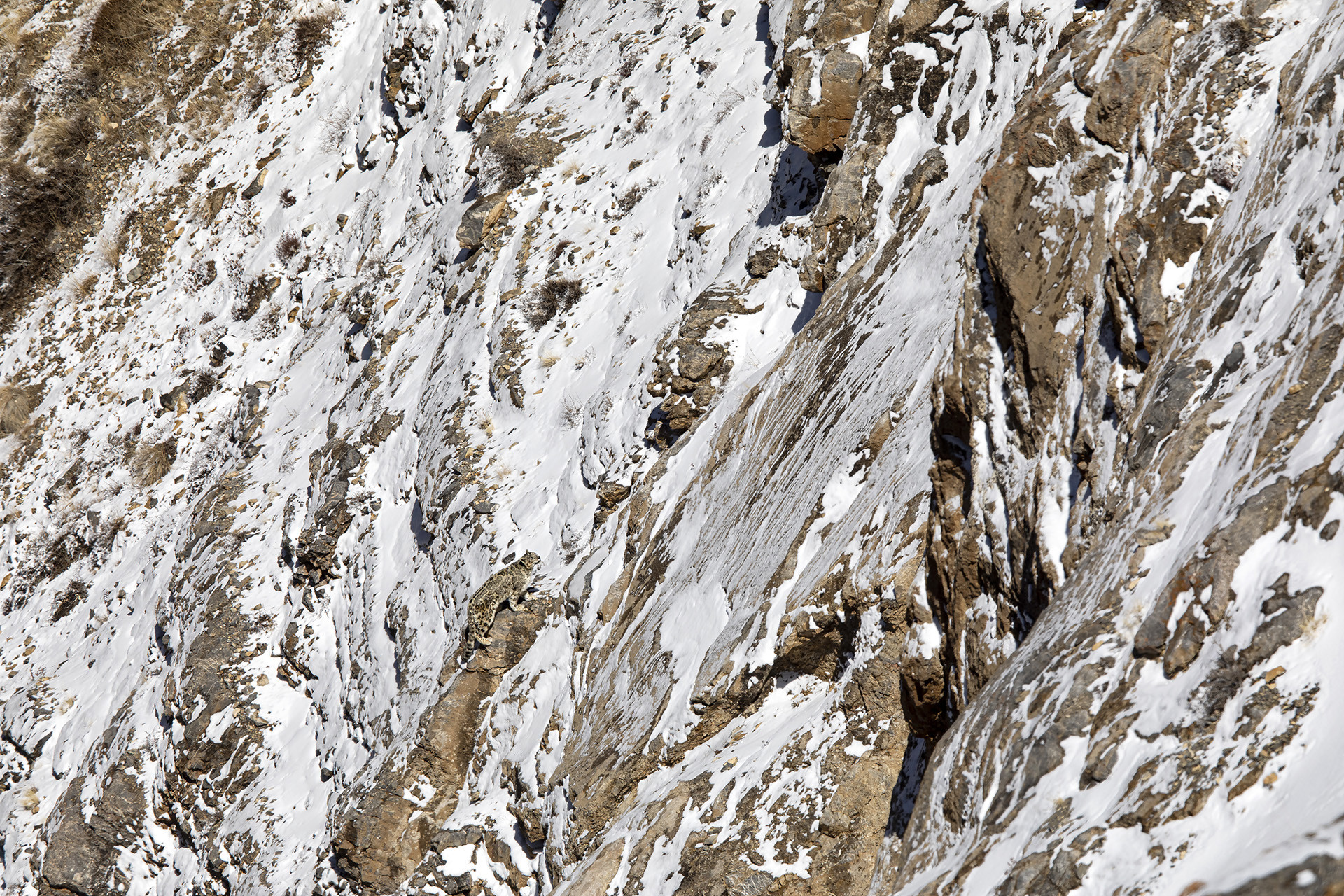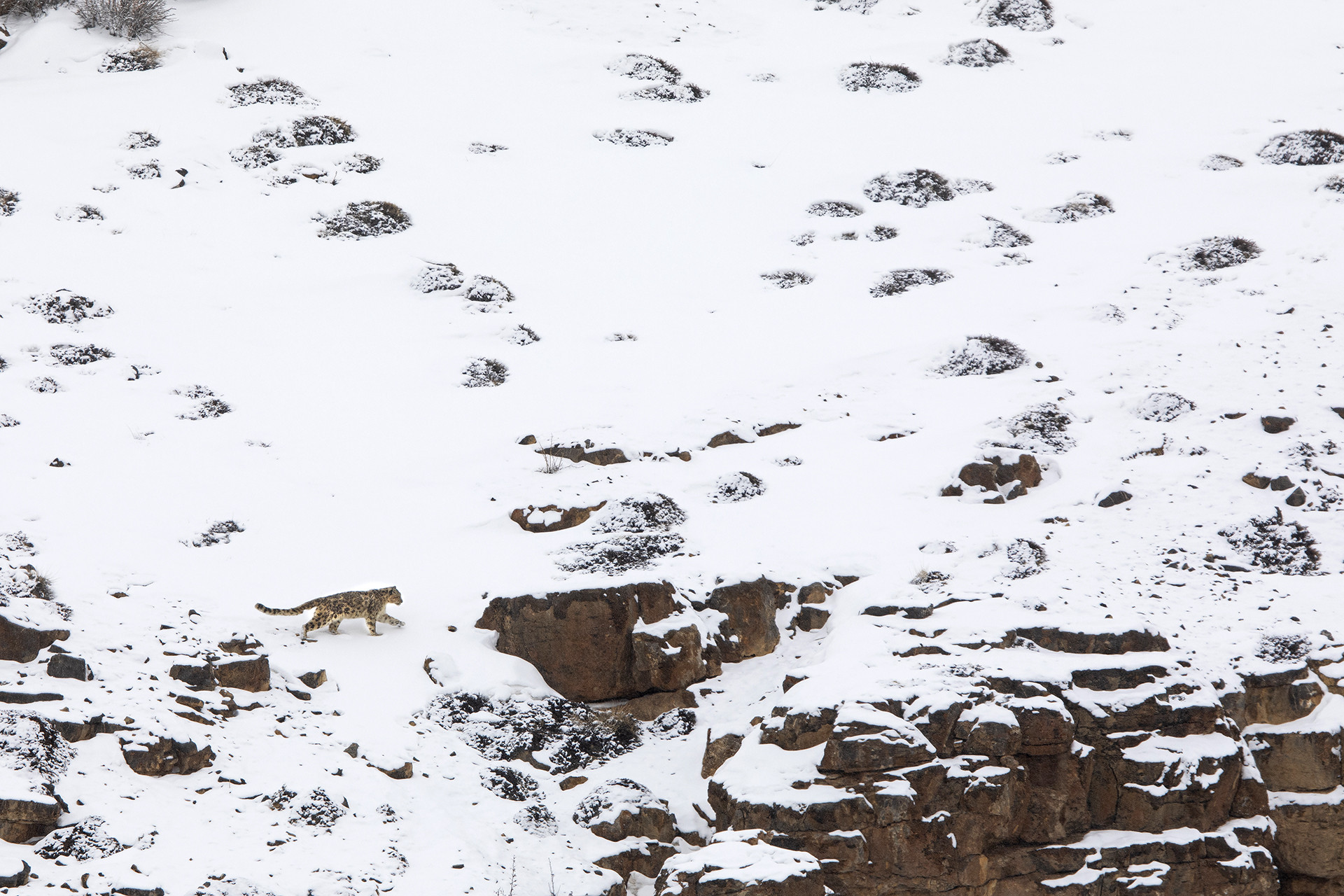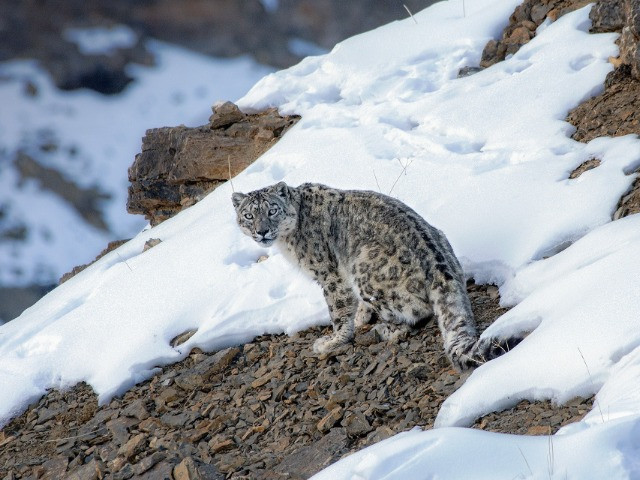I am forever humbled when I bear witness to the sheer expanse of the Himalayas. To stand amidst these skyscrapers of geological history is a privilege I have enjoyed for over a decade. However, as a natural history photographer, the one enigma that continues to fascinate me the most through all these years is the 'Grey Ghost of the Himalayas' – the Snow Leopard.
A master of camouflage, nine out of ten times you encounter this spectacular cat, you think you are gazing at a stationary rock before the slightest movement makes you realise that you are witnessing one of the most charismatic species of the Himalayas. While their camouflage abilities are to be admired, it is also the biggest challenge of working with Snow Leopards. The Snow Leopard loves its cover, and its coat helps it blend with the habitat flawlessly.
As a photographer, isolation of the subject from the background is key and that can only happen when the cat walks on snow. It is these uncertainties and challenges you face that pull you back to the subzero temperatures of the upper Himalayas in search of this mysterious feline.
It is said that Snow Leopard imagery is not for the faint-hearted. I would add that it is not for the weak-headed either as Snow Leopard documentation is also a mind game and not just a mere display of physical endurance. They tend to sleep through the day and have very short time frames of movement. That doesn’t mean the Snow Leopard won’t act during the day, like all cats they too are unpredictable. Patience is the keyword; even when your fingers are freezing and the frigid winds shut down your brain, you have to brave your heart and soldier on – all in pursuit of that one moment.
White is an astonishing colour; the starting point of an easel. When I experience the grandeur of this white canvas, of the snow-covered Himalayas, creativity for me as a visual artist flows from all corners of my viewfinder. The sheer presence of that mighty predator on the sheet of white – however small or big it may be in the frame – is an ever-aspirational and quintessential image.









